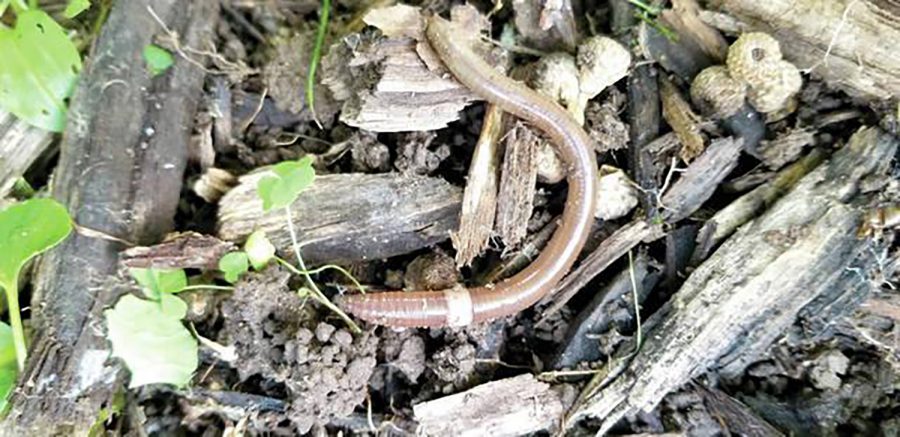Jumping worms skip into Johnson County
An invasive species of worms known to destroy topsoil have appeared in Johnson County in the last year.
A jumping worm found in Linn County. The invasive species has been found in seven Iowa counties, including Story County, since 2018. Photo by Karla McGrail/Iowa State University Extension, Cedar Rapids.
July 8, 2019
Within the past couple years, an invasive species known as the jumping worm has appeared in eastern Iowa and has begun to affect topsoil in local wooded areas.
According to the Iowa State University Extension and Outreach website, jumping worms, originally found in East Asia, made their way to the United States and were found in Illinois and Wisconsin starting around six years ago.
They first showed up in Dubuque and Muscatine Counties in Iowa about a year ago and have since spread. Johnson County residents have begun to report encountering the worms.
“I’ve heard about them … Customers have told me that they’ve seen them,” said Chuck Porto, a manager at Iowa City Landscaping and Garden Center.
Jumping worms can be identified by the snake-like movements they make when disturbed, a behavior that earned them their name, according to the website.
Johnson County residents can expect to see the worms in their yards within the next couple years if trends continue, said Cindy Parsons, co-president of Project GREEN.
All species of worms in Iowa are considered invasive, but jumping worms pose more of a threat, said Donald Lewis, an Iowa State University entomologist.
“These are more destructive,” Lewis said. “Jumping worms live on the soil surface. Nightcrawlers and garden worms live in the soil, where they provide benefits of aeration of organic matter.”
Jumping worms live in a different place from most earthworms, and this brings about a unique set of problems.
“They eat surface organic matter at a very high rate, reducing the surface layer of organic matter, which can lead to compaction and erosion,” Lewis said.
RELATED: UI students make campus green space more habitable for bees with a new garden
This endangers soil quality and will mostly effect sloped areas and woodland ecosystems — areas that are more susceptible to erosion.
Parsons said that while the worms affect the soil in a negative way, gardeners probably won’t notice any drastic, immediate problems.
“You can still plant the same things, and your yard may look the same, but I think things may not thrive as much as before,” Parsons said. “People may find themselves replanting things. Things that used to look nice for years and years won’t look quite as nice.”
Although jumping worms won’t have a significant effect on the yards of homeowners, organizations such as Project GREEN will be affected, Parsons said.
“This year, we’ve sold products at farmers’ markets, and a lot of those were dug out of people’s yards,” she said.
Parsons said that in the near future, the staff will have to carry out new procedures when transporting plants for sale.
Jumping worms can’t be killed with pesticides, so there is no systematic way to stop them from spreading, Lewis said. That means that if you find them in your yard, it is up to you to keep them contained.
“If you have found jumping worms on your property, you need to be very careful not to move mulch, plants, or soil. That might spread the jumping worms,” Lewis said.
Jumping worms are still fairly new to Iowa’s ecosystems. People need to do everything they can to stop them from spreading, Lewis said.
“The earthworms are not going to move very far on their own,” he said. “It’s up to us to make sure that we don’t move them.”




